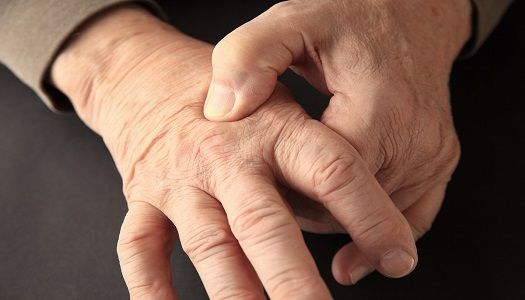Article
3D Printouts Could Encourage Patients with Arthritis to Take Their Medication
Author(s):
Arthro-haptic 3D printed prototypes give patients an emotional experience.

Patients may gain understanding of the impact of arthritis on their joints from arthro-haptic 3D printed prototypes of affected finger joints, according to a recent German study.
Led by Arnd Kleyer, MD, of the Department of Internal Medicine 3, Rheumatology and Immunology, at Friedrich-Alexander University in Erlangen, Germany, and colleagues.
Both rheumatoid arthritis (RA) and psoriatic arthritis (PsA) can lead to the destruction of joints and long-term disability when not properly treated. However, the results of recent studies show that patients adhere poorly to taking the most effective drugs to treat these diseases.
Arnd Kleyer, MD, of the Department of Internal Medicine 3, Rheumatology and Immunology, at Friedrich-Alexander University in Erlangen, Germany, led his colleagues to research this area further. They said that although there are multiple reasons patients do not take the medications, “it is mainly influenced by medical beliefs and lack of understanding the disease.”
Some tools, such as brochures and smartphone apps, exist to help clinicians educate patients. Unfortunately, most have not be scientifically evaluated or tested to see if the strategies actually improve adherence. Clinicians use radiographic techniques to monitor disease progress and changes in the bones, but provide only a two-dimensional image.
The researchers wanted to find out if 3D printed prototypes of both arthritic and healthy joints, combined with a video describing erosions and disease progression, could help patients better understand the disease—and hopefully improve adherence to their drug regimens. They used 3D printouts of joints from healthy people as well as from patients at different stages of RA, “ranging from erosive, destructive disease to non-erosive bone alterations.”
The finger joint 3D printouts were shown to 40 people—15 with RA, 15 with PsA, and 10 healthy controls. The participants were then interviewed to determine the participants’ thoughts on various types of therapies, as well as their reactions to the prototypes and video. They were also shown plain pictures of the joints, which many of them had seen before, for comparison.
The arthro-haptic experience had an emotional impact on the patients, the team observed.

When asked how the 3D prototypes made them feel, some reactions from healthy participants were, “Seeing the degeneration is frightening,” and “It shocks. I’d do anything to prevent it from worsening.” Patients with RA and Psa said things like, “I’ve got to be serious. I didn’t think it was that bad,” and “I’m just glad that my joints haven’t degenerated as far.”
Despite the emotional impact, the researchers can’t say with certainty that it will help medication adherence. The 3D printouts were effective to a point, but it would be maximally efficient to include a printout of each patient’s joint.
“Focusing on feasibility, individualized 3D prints demand the image of the individual patient,” the team said. However, at the current time, limited access to the necessary technology, as well as the skills required to produce the prints, limits the likelihood of this method becoming widespread.
On the bright side, the researchers noted that they received many requests from rheumatologists for the models created in this study to be used for demonstration in their practices.
Using the Canon EOS 5D Mark 3 and Canon EOS 650D, the video was made to explain the development of erosion and illustrated the making of the 3D prototypes. It was modified using Adobe Premiere CC 2014 and the researchers said that what the participants saw on the tape “was close to reality.”
“Using individual arthro-haptic joint constructs will address a gap in patient education and disease understanding,” the team concluded, adding that they plan to set up a platform that will allow for 3D images of joints to be printed in homes or offices.
The study, “Development of three-dimensional prints of arthritis joints for supporting patients’ awareness to structural damage,” was published in the February 2017 edition of Arthritis Research & Therapy.
Related Coverage:
Need a Bone Transplant? Just Print One Out
Rheumatoid Arthritis: Honing in on Roots of Inflammation
Rheumatologists, Orthopedists Collaborate to Improve Patient Outcomes





